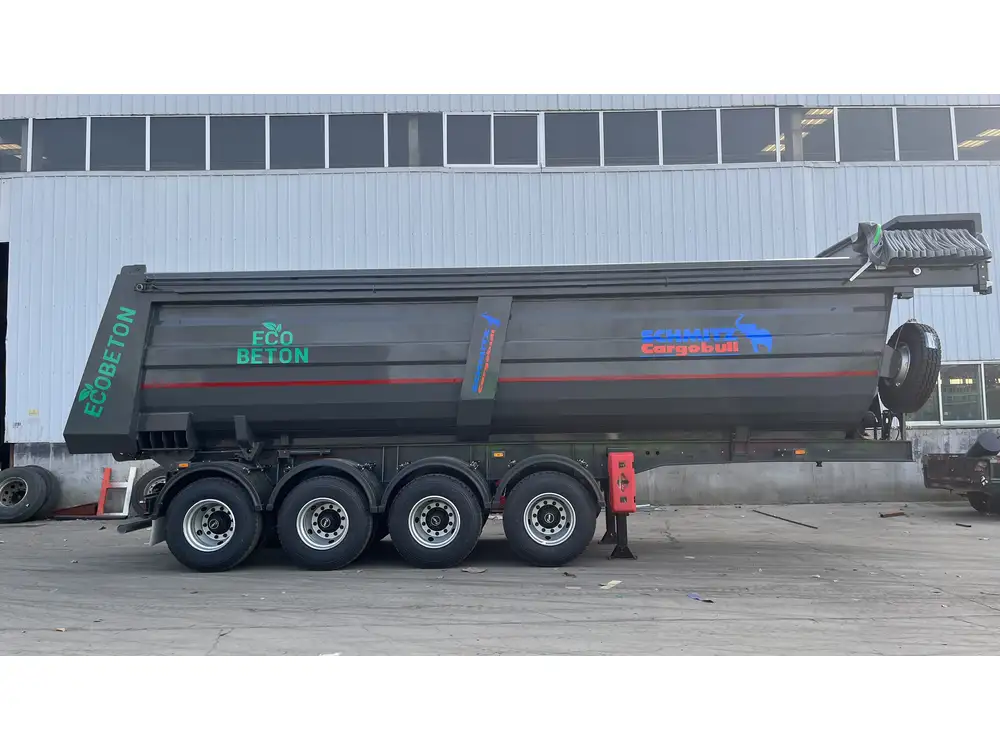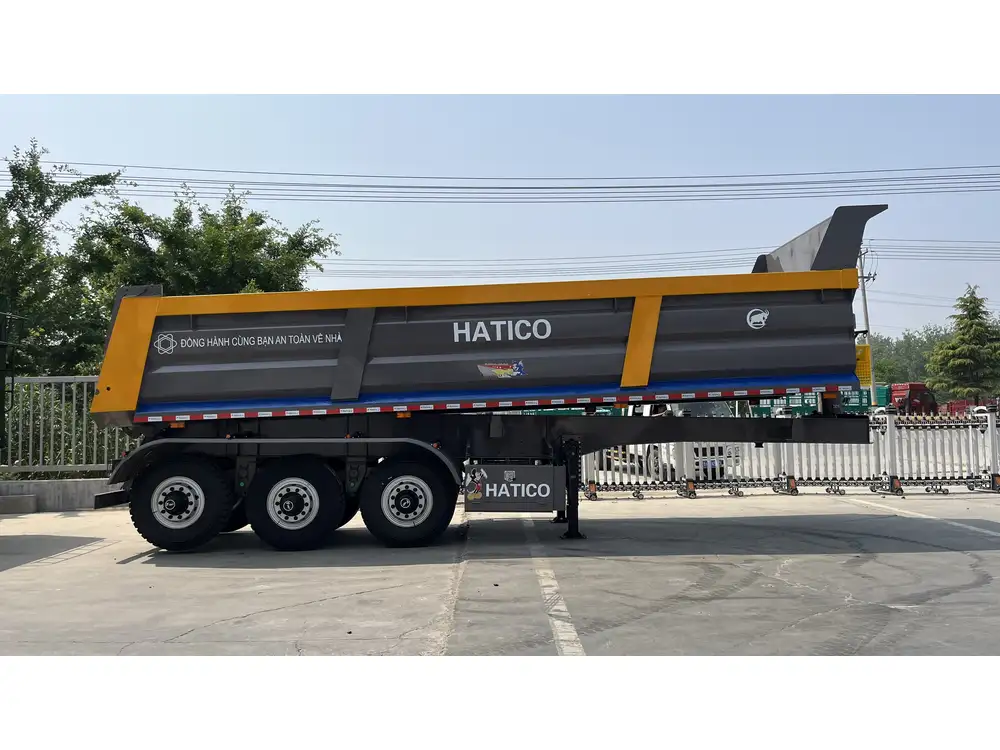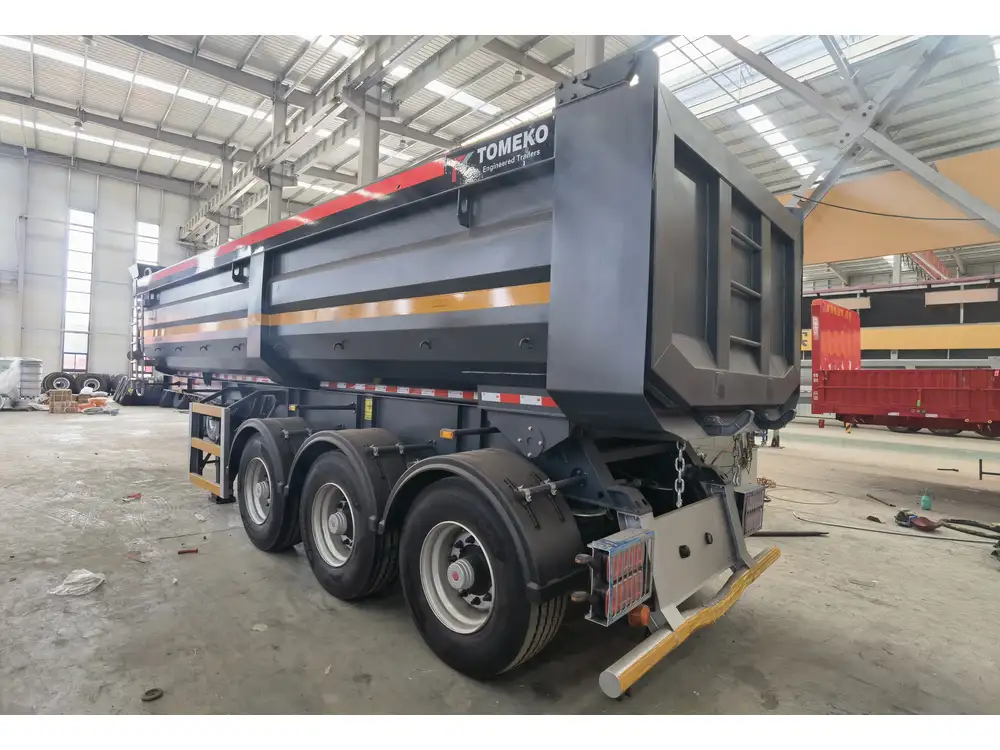When navigating the semi-trailer landscape, one of the most critical aspects to consider is width. Understanding how wide a semi-trailer is—along with the various regulations and implications associated with these dimensions—plays a pivotal role for manufacturers, logistics companies, and end-users alike. In this exhaustive guide, we will dissect the key considerations around semi-trailer widths, including regulatory frameworks, applications, and best practices for ensuring compliance while maximizing functionality.
The Fundamental Dimensions of Semi-Trailers
1. Standard Semi-Trailer Width
The standard width for a semi-trailer is typically 8.5 feet (102 inches). However, this dimension can vary based on specific applications and regional regulatory standards. For instance, certain states in the U.S. allow for wider trailers under specific circumstances, accommodating up to 10 feet (120 inches) in width for specialized cargo.

Table 1: Common Semi-Trailer Widths
| Type of Semi-Trailer | Standard Width | Maximum Width (Certain States) |
|---|---|---|
| Flatbed Trailers | 8.5 feet (102″) | 10 feet (120″) |
| Dry Van Trailers | 8.5 feet (102″) | 10 feet (120″) |
| Refrigerated Trailers | 8.5 feet (102″) | 10 feet (120″) |
| Tank Trailers | 8.5 feet (102″) | 10 feet (120″) |
2. Factors Influencing Width Requirements
2.1. Regulatory Compliance
Different states and countries impose varying restrictions on trailer widths. In the United States, regulations may differ by jurisdiction, necessitating careful attention to local laws:
- Federal Highway Administration (FHWA) guidelines typically govern inter-state travel but can vary significantly on intra-state routes.
- European Union (EU) directives also specify maximum trailer widths and impose additional standards for safety and durability.

2.2. Cargo Type
The nature of the cargo significantly influences the width of the trailer utilized:
- Oversized Loads: Specialized loads may necessitate wider trailers, requiring specific permits to operate legally.
- Standard Goods: Most standard freight operations benefit from the conventional 8.5-foot width for enhanced maneuverability without exceeding regulatory limits.
3. Comparative Overview of Semi-Trailer Types by Width
It’s essential to examine how different types of semi-trailers align with width specifications and intended uses:
| Type of Trailer | Typical Dimensions | Ideal Uses |
|---|---|---|
| Flatbed Trailers | 8.5 feet (102″) | Construction materials, heavy equipment |
| Dry Van Trailers | 8.5 feet (102″) | General freight, dry goods |
| Refrigerated Trailers | 8.5 feet (102″) | Perishable goods, pharmaceuticals |
| Tank Trailers | 8.5 feet (102″) | Liquid chemicals, fuel |
Implications of Width on Operations

4. Operational Efficiency
Choosing the appropriate width impacts not only compliance but also operational efficiency. A semi-trailer designed to fit standard road widths can mitigate risks associated with excessive maneuvering space, avoiding penalties and fines due to violations.
- Maneuverability: Wider trailers may struggle to navigate through tight urban environments or older infrastructures without incurring damage, leading to costly delays.
5. Cost Considerations
Operational costs can escalate based on the dimensions of the equipment:
- Fuel Efficiency: Wider trailers can face increased wind resistance, impacting fuel consumption rates.
- Maintenance and Repair: The wider the trailer, the more extensive the wear-and-tear from roads, necessitating more frequent maintenance.
Safety Considerations Regarding Width

6. Load Stability
The width of a semi-trailer directly influences its load stability. Wider bases generally lead to greater balance but may also pose stability challenges when turning or navigating uneven terrain.
- Load Distribution: Ensuring proper load distribution can mitigate tipping hazards, particularly with oversized cargo.
7. Safety Regulations
Safety guidelines are embedded within width regulations:
- Heightened Visibility: Wider trailers may present additional visibility challenges for other drivers, necessitating increased attention to marker lights and reflective materials.
- Dynamic Restrictions: Certain highways and bridges impose dynamic width restrictions, which should be systematically examined prior to routing.
Future Trends in Semi-Trailer Widths

8. Innovations in Design
Emerging technologies and design principles are redefining the traditional paradigms of semi-trailer widths.
- Adjustable Width Trailers: Some manufacturers are exploring adjustable width designs, allowing operators to modify the width based on specific cargo requirements or route restrictions.
- Increased Focus on Aerodynamics: Innovations in trailer design might emphasize narrower widths with enhanced aerodynamics, crucial given rising fuel costs and environmental regulations.
9. Sustainability Aspects
As logistics companies increasingly adopt sustainability practices, the width of trailers plays a role in fuel consumption and emissions.
- Hybrid Models: Some companies are developing hybrid semi-trailers that optimize width for aerodynamics while adhering to regulatory dimensions.
- Alternative Materials: Use of lightweight, yet strong materials allows for wider trailers without significant increases in overall weight, enhancing efficiency.
Making Informed Decisions on Semi-Trailer Widths

10. Considerations for Buyers and Fleet Managers
When procuring semi-trailers, it is prudent to consider several factors relating to width:
- Purpose and Frequency of Use: Define the primary function of the trailer and select the width accordingly.
- Regulatory Landscape: Conduct thorough research on the jurisdictions where the trailer will operate to avoid compliance issues.
11. Key Questions to Evaluate
- What type of freight will I be transporting?
- How will local regulations impact my trailer choice?
- What are the height and width limits on routes I frequent?
- Can my fleet accommodate specialized permits for wider loads?
Conclusion
Understanding how wide a semi-trailer is transcends simple measurement—it encompasses regulations, operational efficiency, safety measures, and innovative design. For manufacturers and buyers alike, it becomes imperative to stay informed of emerging trends and regulatory changes in width specifications. By taking a holistic approach to semi-trailer widths, stakeholders can optimize their logistics operations, ensure compliance, and enhance safety—ultimately leading to improved business outcomes.
With the evolving landscape in transportation logistics, embracing the complexities associated with width can pave the way for competitive advantage and sustainable growth.



